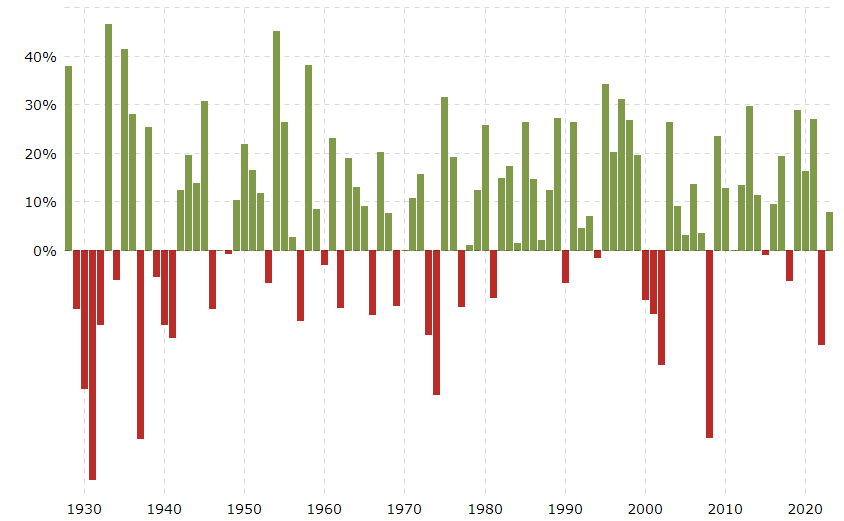There is a long-standing debate about whether set-it-and-forget-it investing is better than active investing. Those that are in the first camp say that you should put your money into indexed investing funds, such as the S&P 500, and just let it ride. People in favor of active investing believe you can out-earn a passive strategy with the right strategies.
Beating an indexed investing funds strategy isn’t easy. The 30-year historical return for the S&P 500 is almost 11% (YChart). That’s a healthy return, even with some really tough years.

Some hedge fund managers can beat the return of indexed strategies. The best consistently earn 20%+ returns for their investors (RIA Intel).
Earning a strong return is getting harder with all the economic headwinds coming together. If you aren’t following how the U.S. economy is performing, here are some headwinds.
- The Fed raised interest rates another .25% this week, moving the base interest rate to 5%.
- The real estate sector is sputtering. My wife has her real estate license. In our area, in just one day, there were 20+ price reductions on homes listed for sale. Commercial office space is about half empty (CNN).
- Lenders are starting to tighten their loan underwriting criteria.
- Loan delinquencies are rising, not just for credit cards but for mortgages as well (Housing Wire).
- The government will have to raise our national debt ceiling again, or we won’t be able to pay our bills.
- GDP, a measurement of production, is slowing. The most recent figure sits at 1.1% (NBC).
What’s all of that got to do with indexed investing?
It is a pretty strong case for a challenging economic environment. Challenging economies require different, safer investing strategies like indexed strategies.
By the way, you wouldn’t know things are heading south if you went out shopping in my area. Just the other weekend we were at our local mall, it was packed. I’m guessing everyone isn’t as keyed into economic indicators as I am. Good thing you have me to watch them for you.
Why indexed investing funds are the safest strategy right now
Indexed investing funds are a type of passive investment strategy that seeks to replicate the performance of a broad market index, such as the S&P 500 or the Dow Jones Industrial Average. Investing in an index fund means owning a small piece of every company in the index. This approach allows you to benefit from the market's overall growth rather than relying on the performance of individual stocks.
One of the key advantages of indexed investing funds is that they offer a low-cost way to gain exposure to a diversified portfolio of stocks. Since index funds simply seek to replicate the market index's performance, the costs associated with managing the fund are typically lower than those of actively managed funds. This means that you can invest in a diversified portfolio of stocks at a lower cost, which can help to maximize your returns over time.
Another advantage of indexed investing funds is that they are generally less risky than actively managed funds. By investing in a broad market index, you are spreading your risk across many different stocks. This can help reduce the impact of any single stock's performance on your portfolio. Additionally, because index funds are passive investments, they tend to have lower turnover rates, which can help to minimize the impact of transaction costs on your returns.
In today's challenging economic environment, indexed investing funds are an especially attractive option for investors looking to manage risk and volatility. It's easier than ever to get started with indexed investing. So if you're looking to build a diversified portfolio at a low cost, consider investing in an indexed investing fund.
I hope you’ll do two things for me if you've found this information helpful.
1) Subscribe to this newsletter. That way, new copies are delivered directly to your inbox.
2) Share this newsletter with another person who might benefit from my information.
